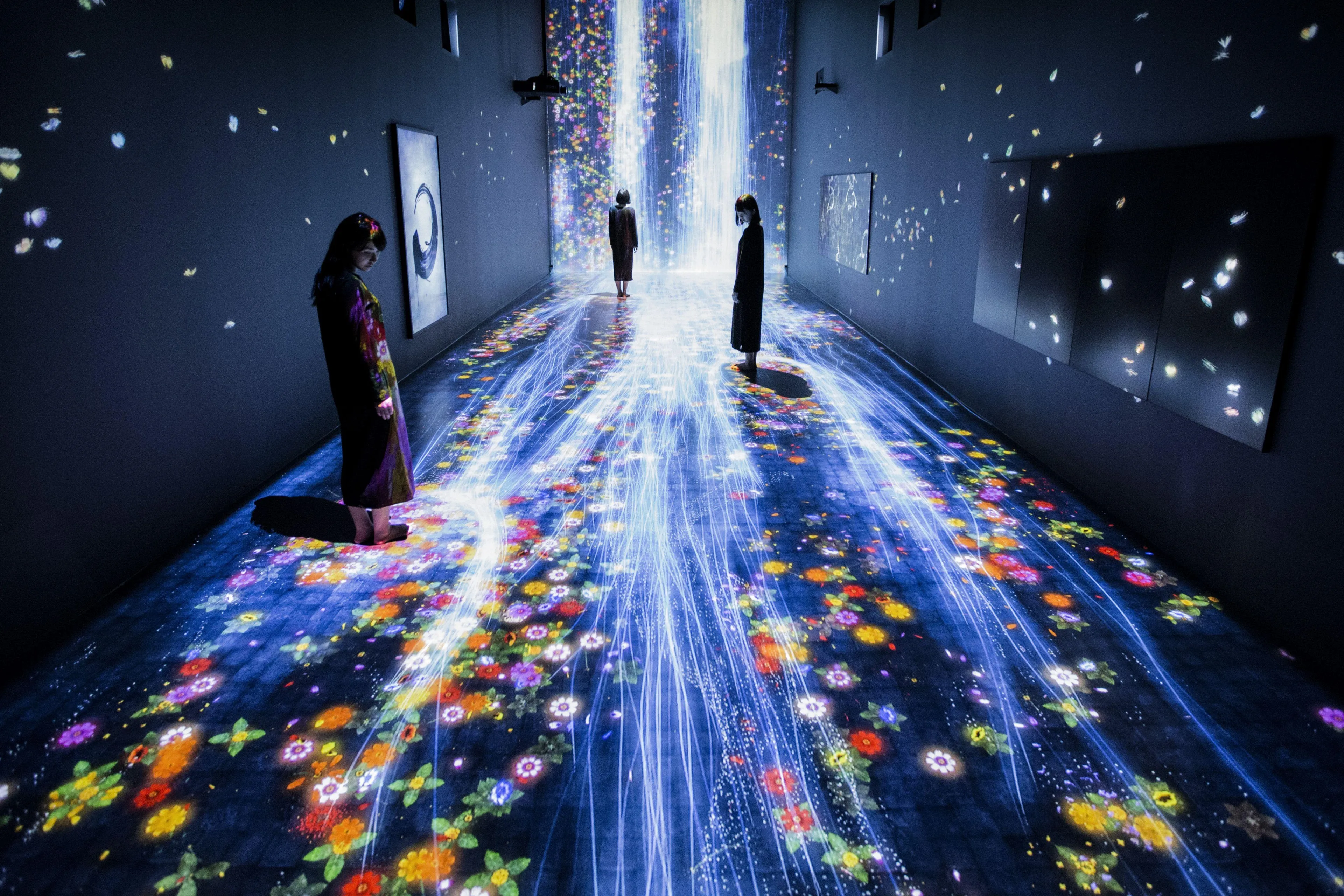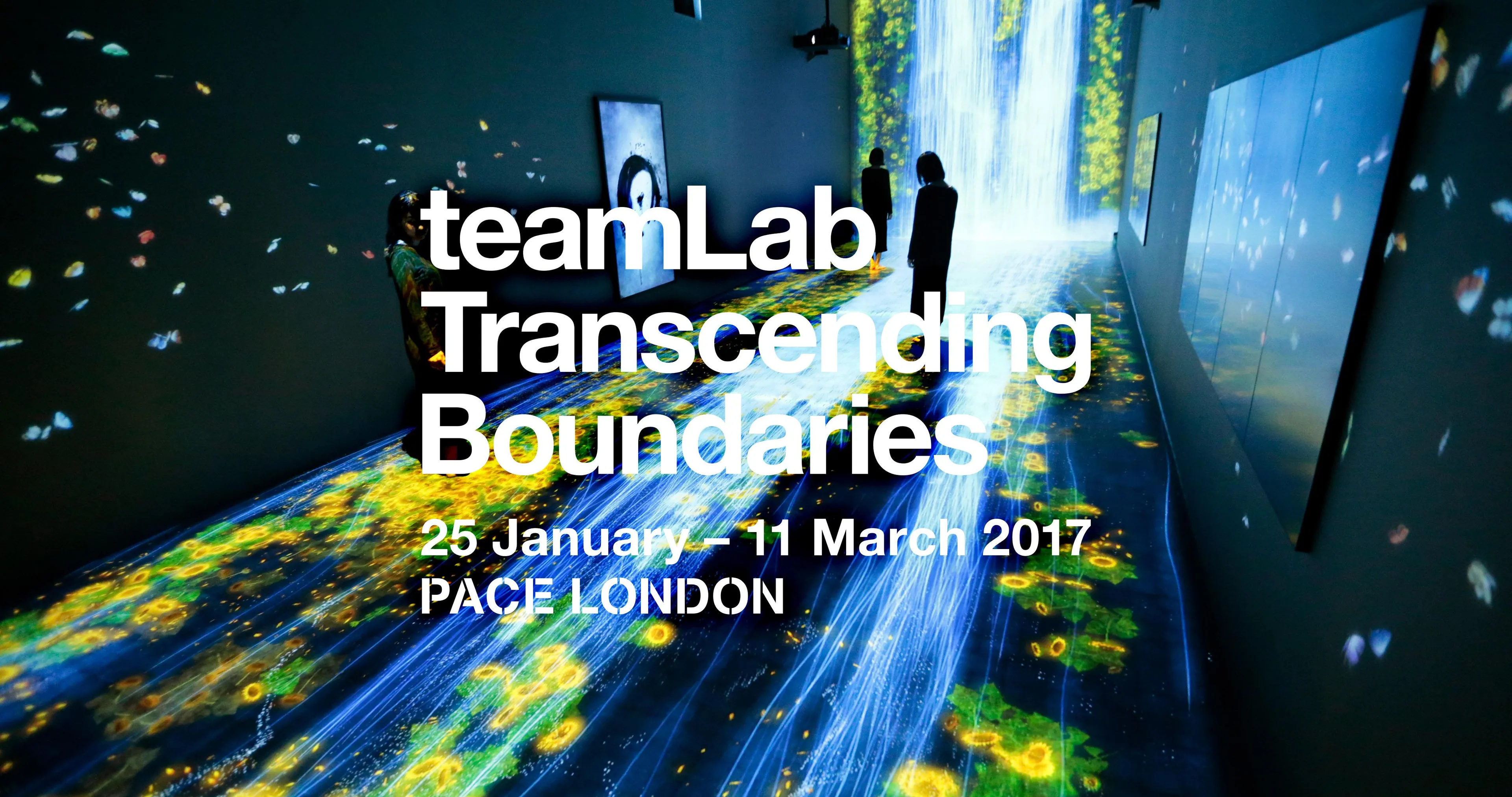探享家 by LEXUS에 소개되었습니다. (may 21, 2018)
建立新的联系:数字技术和艺术
过去,“全息投影”一类的词汇远不如现在普及,但是们所创造的世界。复杂的传感器数列和数字投影仪伴 teamLab 从那时起就已经开始创作数码艺术了。最初,随着幽灵般的算法嗡嗡作响,为你编织出一个奇幻的 的成员大部分是程序员。(Excerpt from the text)


In the mind, there are no boundaries between ideas and concepts, they are inherently ambiguous and influence and interact with each other. In order for ideas and concepts to be expressed in the real world it is necessary to have a physical material substance through which they are mediated. Boundaries are created when ideas and concepts are materialized in the real world.
Within the digital domain, art is able to transcend physical and conceptual boundaries. Digital technology allows art to break free from the frame and go beyond the boundaries that separate one work from another. Elements from one work can fluidly interact with and influence elements of the other works exhibited in the same space. In this way, the boundaries between art pieces dissolve.

작품
전시회장 정보
기간
관람 시간
관람료
Website
오시는 길
주소
문의
For private viewing